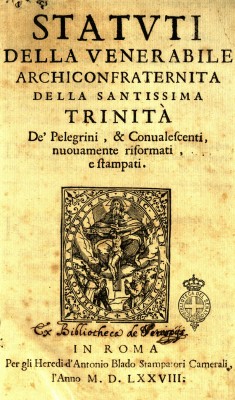Visita la galleria
Religious confraternities supported jubilee pilgrimages since the very first Holy Years, even though they started operating on regular bases from the 16th century: their logistic help was of great importance and had a central role. The Confraternity of the Holy Trinity of Pilgrims and Convalescents was founded in 1548 by Saint Philippe Neri, and it managed the material hospitality with very strict rules. A timely programming of arrivals was fundamental to supply kitchen and refectories, with food and other items, set the bedrooms and – if needed – rent more rooms. The peak events related to the hospitality pattern were represented by the foot washing ritual and the offering of the evening meal, cadenced by the recital of prayers and visits in procession to the basilicas. To cope with overcrowding, confraternities would usually provide hospitality for only three nights. Such a brief stay would be long enough thanks to a “Privilege for shortening Basilica visits” and special indults that pontiffs granted to confraternities. Foreigners could also count on several national foundations associated with the various states of different parts of Europe or the Italian peninsula. While in Rome, sick pilgrims could get assistance at major public hospitals, like the “Santo Spirito in Saxia Hospital”; better-off pilgrims could pay to be treated privately at the home, inn or hotel where they were staying.
